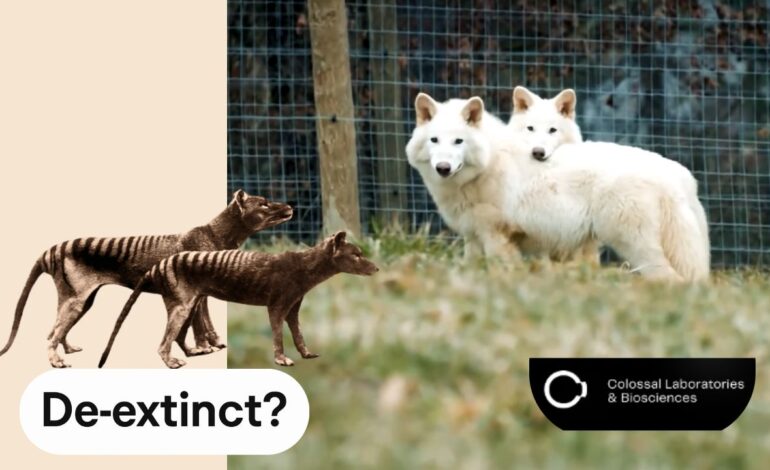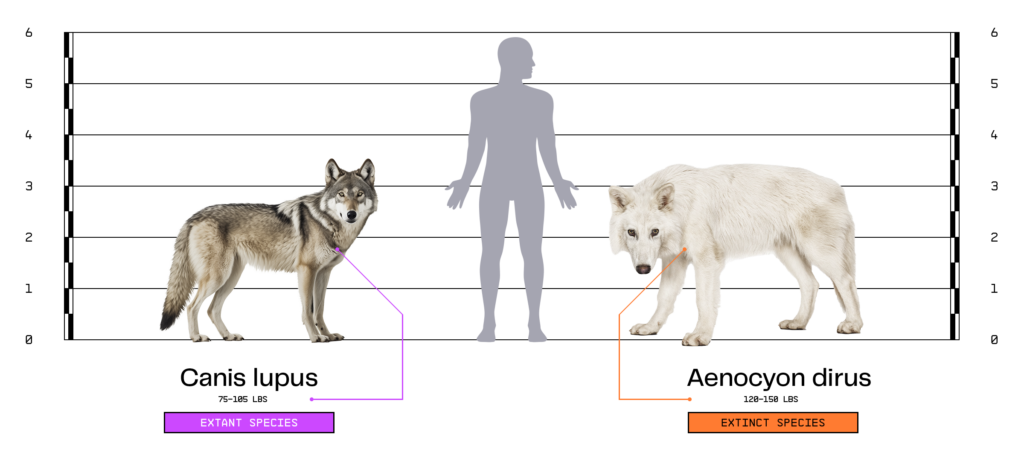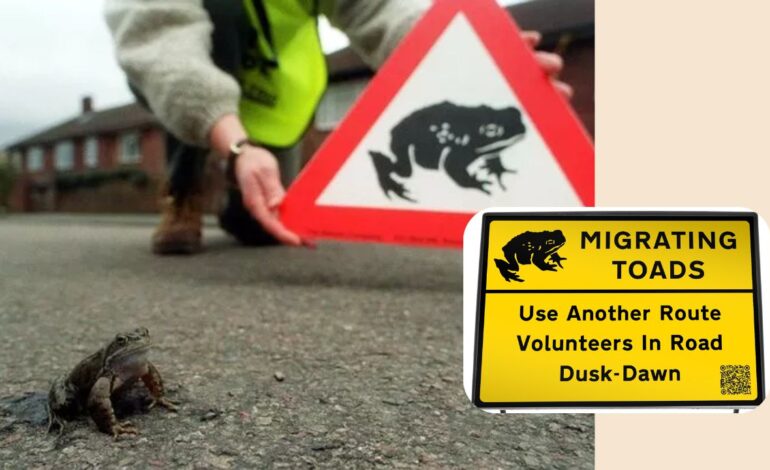De-Extinction and the Dire Wolf: Innovation or Interference?

It began not in a lab, but in a legend—two names borrowed from myth: Romulus and Remus. But this is no ancient Roman tale. These creatures growl, breathe, and stalk the present, born from science’s boldest ambition: to reverse extinction itself. As dire wolves pad back into existence, one question howls louder than the rest—have we crossed from healing the planet to rewriting its past? Innovation or interference, this isn’t just genetic engineering, it’s ecological resurrection. And like every resurrection, it forces us to ask: just because we can, does it mean we should?
In recent weeks, a remarkable scientific breakthrough has captured global attention—the birth of Romulus and Remus, the world’s first de-extinct animals. Though they were born on October 1, 2024, the significance of their existence has only recently sparked widespread discussion. These two male dire wolves (Aenocyon dirus), a species that roamed North America during the Pleistocene Epoch (approximately 2.6 million to 11,700 years ago), mark a historic milestone in genetic engineering. They were joined by a female, Khaleesi, born on January 30, 2025—completing the first known trio of revived dire wolves.
At six months old, Romulus and Remus each measure nearly 4 feet (122 cm) in length and weigh around 80 pounds (36 kg), with expectations to reach 6 feet (183 cm) and 150 pounds (68 kg) at full maturity. Khaleesi, now three months old, is developing along a similar path.

The dire wolf was a large prehistoric canine, distinct from the modern gray wolf (Canis lupus), with a more massive skull, smaller brain, and lighter limbs. Fossils have been discovered across North America, especially in the La Brea Tar Pits. The species emerged around 5.7 million years ago and evolved separately from gray wolves before going extinct more than 10,000 years ago.
The revival of Romulus, Remus and Khaleesi was made possible through cutting-edge genetic engineering by the biotechnology company Colossal. Using ancient DNA extracted from fossils dated between 11,500 and 72,000 years old, scientists reconstructed a complete dire wolf genome. With precise genetic edits, they reintroduced the species in the form of hybrids with dire wolf-like traits.
However, as Dr. Nic Rawlence of Otago University told BBC, the ancient DNA was too degraded to clone directly—comparing it to DNA left in a 500-degree oven, fragmented and unusable. Instead, scientists turned to synthetic biology. By identifying key genetic markers, they edited gray wolf DNA to express characteristics of dire wolves, resulting in hybrids with features like larger skulls and white fur.
Dr. Beth Shapiro of Colossal Biosciences explained that although dire wolves diverged from gray wolves 2.5 to 6 million years ago and belong to a different genus, de-extinction was achieved by targeting 20 changes across 14 genes. These edits successfully recreated the essential traits of the dire wolf, qualifying the animals as functionally de-extinct.
Colossal defines functional de-extinction as:
“The process of generating an organism that both resembles and is genetically similar to an extinct species by resurrecting its lost lineage of core genes; engineering natural resistances; and enhancing adaptability that will allow it to thrive in today’s environment of climate change, dwindling resources, disease, and human interference.”
Beyond scientific curiosity, de-extinction is framed as a form of “deep ecological enrichment”—restoring ecosystem functions lost through extinction. According to Colossal, reintroducing such species into suitable habitats can enhance biodiversity and build ecosystem resilience. A key example is their woolly mammoth project, where mammoth traits are introduced into Asian elephants to help revive the Arctic tundra.
These mammoth-like animals are expected to reshape the landscape by trampling dense forests, exposing carbon-absorbing grasses, and stirring up frozen soil. Such actions could restore the tundra’s natural balance and help combat climate change by improving carbon sequestration and reducing greenhouse gases.
Yet, this bold scientific frontier raises critical ethical and ecological questions. Extinction, after all, is a natural part of evolution—species have emerged and vanished over millions of years. Should science intervene in this process? And more importantly, is it necessary to bring back extinct species when so many living ones are on the brink?

While de-extinction holds promise, it also risks diverting attention and resources from pressing conservation efforts. Today, thousands of existing species face threats from habitat destruction, climate change, and human interference. Shouldn’t the priority be to protect and preserve current biodiversity rather than focus on resurrecting the past?
In the end, balancing scientific innovation with ecological responsibility is vital. De-extinction may offer new tools for environmental restoration and climate resilience, but it should not overshadow the urgent mission of conserving the living world around us.
References:
https://colossal.com/de-extinction/
https://www.aljazeera.com/news/2025/4/8/has-the-dire-wolf-come-back-to-life-here-is-what-we-kno
https://x.com/colossal/status/1909247817672957959?t=pKdV_i9u9SaeeBJRZTGToQ&s=19
https://www.bbc.com/news/articles/c4g9ejy3gdvo
https://colossal.com/how-de-extinction-works/












Rightly said…on one account, science is just encouraging to explore and revitalize…on another account it may develop less interest/care in conserving the nature…sure and tough to have a balance
The way that science is permeating every aspect of life (from ai to now de- extinction of extinct species) is quite amazing. As exciting as the discovery is, many people may be concerned about the de-extinction of dire wolves. The author has accurately described how this step can be innovative and on the other hand interfere with natural processes. Amazing article!